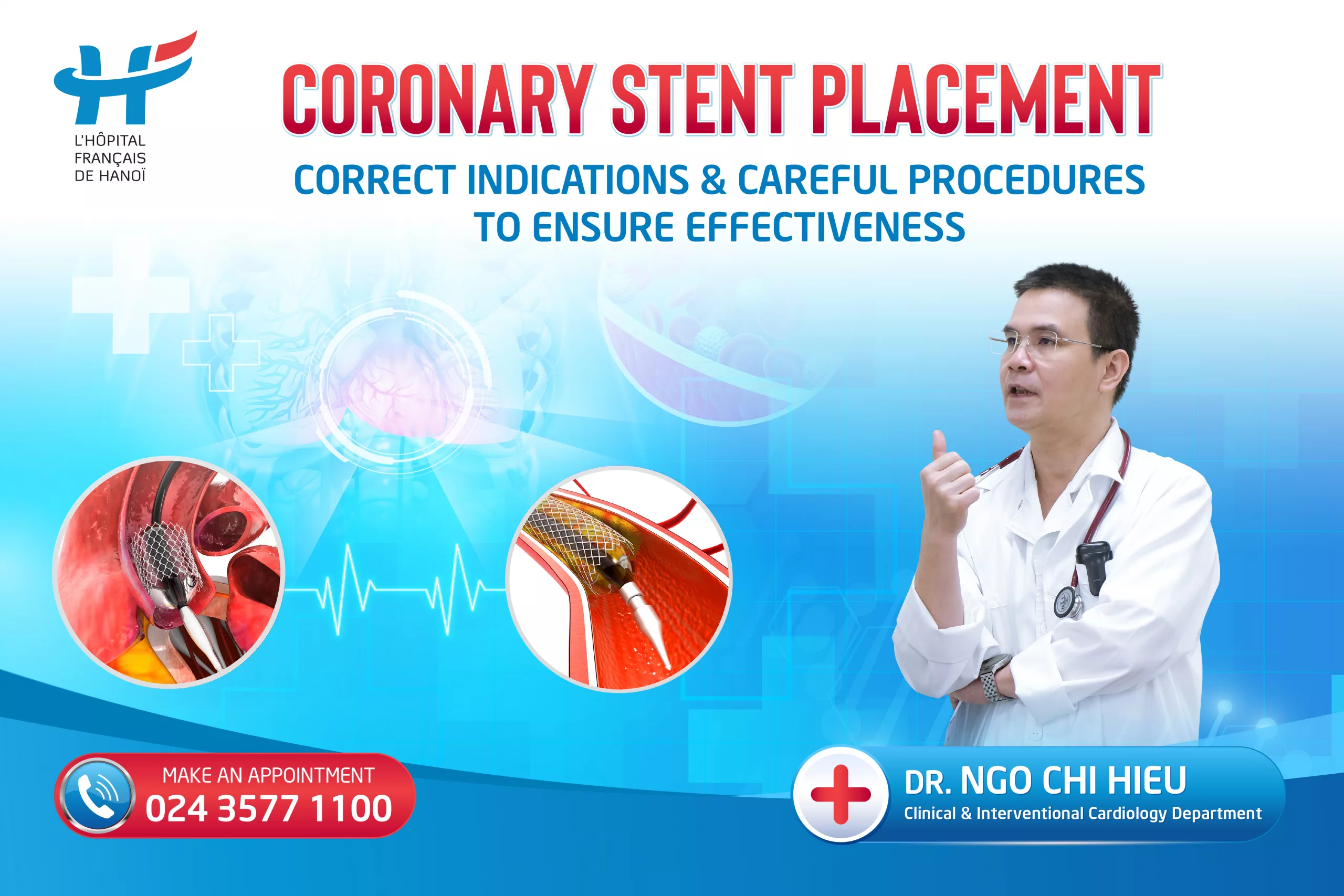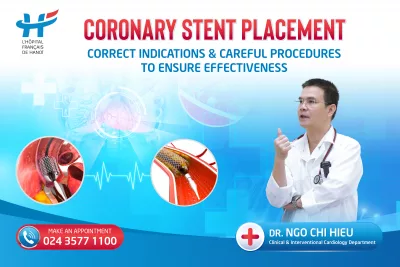A coronary stent is an ultra-small metal mesh that can self-expand, delivered into the blood vessel through a thin catheter. When it reaches the narrowed location, the stent expands, pressing against the artery wall to keep the vessel open and ensure smooth blood flow.
According to the European Society of Cardiology (ESC) guidelines, coronary stent placement is indicated in the following situations:
- Acute myocardial infarction: This is a clear and urgent indication. Timely intervention helps restore blood supply to the heart muscle, reducing the risk of death and serious complications.
- Persistent stable angina: When coronary artery narrowing exceeds 70% and causes prolonged symptoms that affect daily activities despite intensive medical treatment.
- High-risk coronary artery lesions: For example, left main coronary artery stenosis, multiple major vessel disease, or complex anatomical abnormalities.
Dr. Ngo Chi Hieu – Clinical & Interventional Cardiology Department, Hanoi French Hospital – said: “Not every case of coronary artery stenosis requires stent placement. Patients need a comprehensive evaluation of the degree of narrowing, lesion location, symptoms, the impact on heart function, and the risk of cardiovascular events.”
Cardiologists also need to be cautious in choosing the type of catheter, stent type, number of stents, and in accurately delivering and deploying the stent. A deviation of just a few millimeters can result in misplacement, vessel wall injury, or ineffective stent placement.
After stent placement, the doctor continues to monitor clinical progress, adjust antiplatelet medications, control blood pressure, blood lipids, and blood sugar, and establish a long-term care plan to prevent restenosis or late complications.
Dr. Hieu specifically reminds patients: “Stent placement is part of the treatment process, not the endpoint. True effectiveness is only achieved when the patient strictly follows the long-term treatment plan and adopts lifestyle changes.”
At Hanoi French Hospital, you are examined, consulted, and treated by Dr. Ngo Chi Hieu – PhD in Cardiology, former Head of Cardiovascular Intensive Care Unit – Hanoi Heart Hospital. The stent placement procedure is performed in a modern DSA digital interventional suite, strictly following infection control regulations.
For more detailed information or to book an appointment with a specialist at HFH, please contact HOTLINE 024.35771100, INBOX the Fanpage “Hanoi French Hospital” or Zalo OA zalo.me/2008009049335817955


